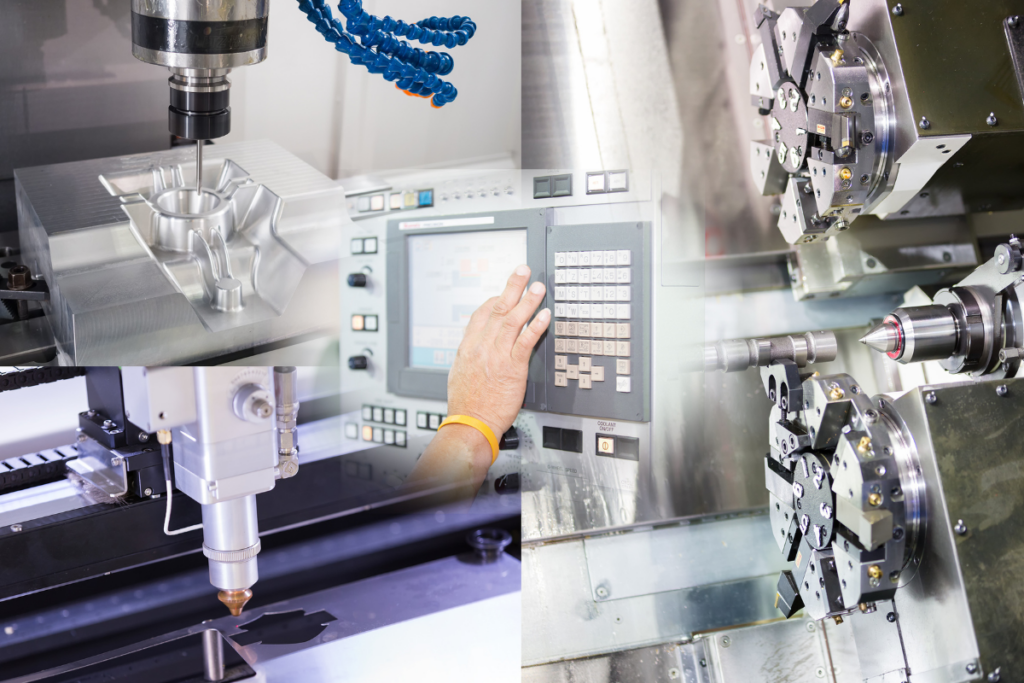Manufacturing technology has evolved dramatically over the past several years, with two methodologies standing head and shoulders above the rest: precision machining and 3D printing. These two techniques have reached a level of prominence in their ability to allow our industry to produce complex parts and components. However, they go about this process with two very different fabrication approaches.
Precision machining, rooted in traditional subtractive manufacturing, has long been the stalwart of industrial metalworking. However, 3D printing, or additive manufacturing, has disrupted traditional manufacturing with its unique capabilities and efficiencies.
As a manufacturer, it can be difficult to determine which process is best for your application. Let’s examine the intricacies of each process to help you make an informed choice.
What Is Precision Machining?
Precision machining encompasses various metalworking techniques, such as milling, turning, grinding, and drilling, all of which aim to shape raw materials into precise components. These processes remove material from a workpiece to achieve the desired shape and dimensions down to the last detail.
At the heart of precision machining is Computer Numerical Control (CNC) technology, which enables automated control of machining tools with high precision and repeatability. CNC machines have state-of-the-art software to execute complex machining operations with minimal human intervention, enhancing productivity and consistency, especially for large production runs.
One of the primary advantages of precision machining is its ability to handle a wide range of materials, including metals, plastics, and composites, with exceptional accuracy and surface finish. Products created through precision machining often exhibit outstanding mechanical strength and tight tolerances, making them ideal for applications in specialized industries, such as automotive.
Not only does precision machining allow manufacturers to enhance sustainability efforts but it also benefits from a cut in costs by reusing “wasted” material removed from the source material during the fabrication process.
Though the set up and tooling costs can be higher, the time and financial investments in this technique are well worth it once the final products are delivered and ready for further processing.
Read More: Trends And Innovations In Precision Machining
All About 3D Printing
3D printing works in an opposite fashion to precision machining. It builds objects layer by layer, carefully adding material to fabricate complex shapes and internal geometries that would be challenging or impossible to achieve using traditional machining methods. This process offers several unique advantages, including design flexibility, rapid prototyping, and reduced material waste.
The process starts by slicing a digital model into thin horizontal layers. The 3D printer then deposits material layer by layer according to the design. Various printing technologies exist, including fused deposition modeling (FDM), stereolithography (SLA), selective laser sintering (SLS), and binder jetting, each with its unique method of adding material to the model.
One key benefit of this type of additive manufacturing is its ability to streamline the product development cycle. Design iterations can be quickly prototyped and tested on demand without the need for often cost-prohibitive tooling or machining setups. As a result, the time to market for new products is accelerated, keeping companies in industries characterized by rapid technological advancements competitive.
Like precision machining, 3D printing offers material versatility and competency with a wide range of thermoplastics, metals, ceramics, and composites. These materials are perfect for additive manufacturing and ideal for producing lightweight or optimized structures. However, 3D printing sometimes struggles with structural weaknesses, particularly in metal applications, necessitating post-processing steps such as heat treatment to improve mechanical properties.
As 3D printing technology matures and adoption rates increase, we expect this process to become increasingly competitive with traditional machining methods.
Read More: How Robotics Is Transforming The Precision Machining Landscape
Should You Use Precision Machining Or 3D Printing For Your Project?
The decision about which technique to use depends on your individual needs. For example, precision machining might be the best approach if you need high-quality, high-performance components that prioritize accuracy, reliability, and material integrity. However, if you’re emphasizing design freedom, rapid prototyping capabilities, and potential cost savings, particularly for low-volume or customized production, 3D printing might be your best bet.
If you’re unsure which option is best for your application, the team at Arrow Automotive can help. We’ll take the time to listen to your needs and make our best recommendations for a solution that will yield the highest-quality results at an attractive price point.
No matter how large or complex your project is, we’ll get the job done to your complete satisfaction, every time.
Contact Kenona Industries/Arrow Automotive For A Quote On Your Next Design And Fabrication Project
Kenona Industries, a division of Arrow Automotive is a world-class supplier of high-volume, precision-made components to leading automotive OEM and Tier 1, 2, and 3 suppliers. Discover everything that sets us apart by requesting a quote for your next project today!
